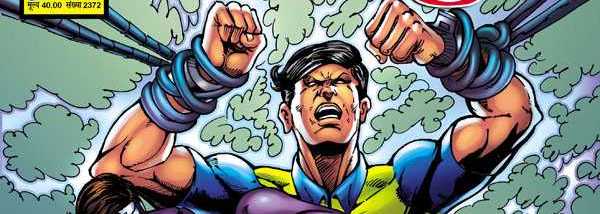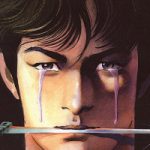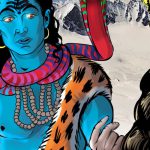Super Commando Dhruva
Regions: India

The character of Super Commando Dhruva, created by Anupam Sinha, made his debut in Pratishodh ki Jwala—a Hindi language comic book—in the year 1987. He lives in the fictional Indian city, Rajnagar, which is also a reference to the comic book line, Raj Comics that publishes the Dhruva series. Rajnagar literally translates to the Raj-city, or the world of Raj. To date Dhruva remains one of the more popular superheroes of South Asian comics.
According to the narrative, Dhruva grew up in the Jupiter Circus, where his parents, Radha and Shyam, were top draws as trapeze artists. While Dhruva does not have any superpowers or alter-egos, unlike traditional “superheroes,” he developed several skills while growing up in the circus. He is an exceptional acrobat, an expert marksman, an adept biker, possesses enormous physical strength, and can communicate with animals and birds. In fact, he replaced his parents as the top act in Jupiter Circus. In Grand Master Robo, an implant is made in Dhruva’s throat that helps him breathe and talk underwater. However, his antagonists would testify that his two great strengths are his intellect and willpower. He is enterprising and can use any object around him as a weapon; for example in Dhruva Shakti, he uses a potato to stop a car.
Dhruva pledged to fight crime after a rival circus group, Globe Circus, burnt down Jupiter Circus due to the latter’s popularity. He was the sole survivor of that incident (though in Khooni Khandan it is revealed that the owner, Jacob, too survived), left to avenge the death of his parents as well as his loved ones. The Superintendent of Police, Rajan Mehra, was so impressed by his bravery that he decided to adopt Dhruva; an idea that was enthusiastically welcomed by Rajni, his wife, and Shweta, his daughter. Dhruva uses the money he gets from insurance to establish “Commando Headquarters” and finance his operations. The headquarter houses a “Commando Force,” a crime fighting unit, comprising three National bravery award winners handpicked by Dhruva—Peter, Karim, and Renu. While Karim is the telecommunication expert, Peter and Renu assist Dhruva, who they address as “Captain,” with combat skills and crime detection. The Commando Headquarters is equipped with cutting-edge technology for the purpose of forensic analysis, global surveillance, and other such units that help combat crime.
Dhruva wears a yellow and blue costume with a brown rubber belt and brown boots. The belt has a star shaped buckle with an embedded transmitter. In Khooni Khandan, members of the Commando Force gift Dhruva a utility belt that has pouches to stock various items. In Dhruva Shakti, Shweta, Dhruva’s foster sister, gifts him bulletproof bracelets equipped with star blades, which can be used as projectiles, and star line, which can be used to swing from one place to another or to tie up enemies. Additionally, Shweta also makes modifications to his boots to fit skating wheels. Dhruva also rides a specially designed motorbike that helps him pull off impossible stunts.
Apart from being a tech wizard, Shweta also comes to Dhruva’s aid in the form of Chandika. She makes her first appearance as Chandika in Swarg ki Tabahi and like Dhruva, she has no superpowers but depends on her physical agility and intelligence to combat foes. However, Dhruva is not aware of Chandika’s true identity. The only person who knows it is his girlfriend, Natasha. Interestingly, Natasha is the daughter of Dhruva’s arch nemesis, Grand Master Robo. Grand Master Robo is an international terrorist with a half metallic body and a laser eye that can vaporize any living organism. Robo’s wife, Marianne, is a retired nurse who separated from him due to his underworld dealings.
Robo is also the arch nemesis of Black Cat or Kali Billi, a vigilante who made her debut in an eponymously titled comic book. Visually this character resembles DC’s Cat Woman. She is the alter-ego of a woman named Richa, whose father was murdered by Robo. Like Dhruva, Black Cat doesn’t have any superpowers but rather depends on her training as a gymnast to fight the bad guys. Unlike Dhruva, she does not hesitate to break the law or take a life and is, therefore, a sought-after criminal. She is hopelessly in love with Dhruva and serves as a foil for Natasha’s character. Though the comic books largely foreground Dhruva, the female characters, especially Chandika and Kali Billi, display competence or ethical complexity that elude Dhruva. Chandika comes to his rescue from time to time, while Kali Billi challenges him on multiple occasions.
In the Dhruva series, Dhananjay is another recurring character. He first appeared in Grand Master Robo and is a member of an ancient race of gods that now dwell underwater in a place called Swarna Nagari. This pacifist race uses extremely advanced technologies. Dhananjay is one of Dhruva’s closer friends although they had a physical confrontation at their first meeting. Dhurva often converts his enemies to friends: another of his friends, Kirigi (an ancient ninja), mistook him for an enemy at first sight. He first appeared in Kirigi ka Kahar, which also marked the debut of Jingalu, a yeti who is a descendant of Hanuman. Jingalu is a close friend of the “Super Commando.”
Dhruva’s stories usually blend detective fiction and science fiction elements. Most villains in Dhruva’s rogue gallery–Chumba, Dhwaniraj, Doctor Virus, among others—are evil scientists. Even seemingly supernatural elements like Vampires are explained “scientifically.” However, the version of science presented in the various comics also draw upon mythical Hindu explanations of phenomena. Even though the Dhruva series seemingly avoids the supernatural, we find allusions to Hindu mythology and epics. For instance, Hanuman, the forefather of Jingalu, was an ally of Rama—an incarnation of the Hindu god, Vishnu in the Hindu epic, Ramayana. In fact, Dhruva also features in an adaptation of the same epic. In Nagayana, set in an alternate futuristic universe, Dhruva is seen playing the role of Lakshman (Rama’s loyal brother in Ramayana) to Nagraj’s Rama. The overt religious-mythological tone of Nagayana, though, takes its cues from Nagraj’s origins rather than Dhruva’s.
Nagraj, another hero of Raj comics, frequently teams up with Dhruva and in their first comic together, Nagraj aur Super Commando Dhruva, they are seen rescuing all the superheroes of Raj Comics from the clutches of Miss Killer. However, this comics’ treatment of Dhruva is atypical in the sense that he is shown to kill other characters. Though there was no exact equivalent of the American comics code (introduced in 1954) in India, Dhruva’s creator Anupam Sinha was reluctant to include scenes of homicide. Nagraj aur Super Commando Dhruva perhaps is anomalous in this respect because it was composed by Nagraj’s creator, Sanjay Gupta rather than Anupam Sinha.
Sinha’s visual composition on the pages remained fairly regular and linear through the late 80s and early 90s: typically, each page of the Dhruva series had 5-6 panels (either 2X3 or 3X2). The regular spatio-temporal rhythm would be temporarily disrupted when Sinha wanted to accentuate kinematics, following the characters’ movements in the action-scenes. For instance, in Aakhiri Daav, panels featuring Dhurva become longer or wider depending on the direction of Dhruva’s movements—wider when he is horizontally jumping out of a window whereas vertical when he is jumping off a terrace.
Dhruva’s characterization and the socio-economic scenarios within which he operates draw upon popular tropes of not only American superhero comics but also from the 1970s and 1980s Hindi popular cinema. The “good” in these narratives (e.g., Zanjeer, Amar Akbar Anthony, Shahenshah) would be frequently connected with the police officers and law keepers. The police force embodied lower-class and middle-class moral aspirations, even though the films became progressively sceptical of this good-evil binary. It is no wonder then that Dhruva and Chandika, brought up by a police officer and his wife, represent the “good.” It is also significant that Dhruva’s adoptive parents position him in a world that comes across as far more mainstream and middle-class compared to the marginal world of the circus where Dhruva learned his tricks. The nurturing influence of adoptive parents remains a popular motif in Hindi popular films.
Even though Dhruva’s character was always in dialogue with Hindi popular cinema’s “heroes,” it was never explicitly adapted for the screen. However, he shares similarities with the superhero Krrish, who appears in Hindi popular films. Krissh, like Dhruva, can talk to animals and his antagonist in Krrish (2006) also happens to be a scientist. Further, Krissh draws upon the repertoire of Hindu mythologies—Krissh’s other name, Krishna, is the name of a Hindu god. Like Dhruva, Krissh also abstains from violence as much as he can. While media-scholar, Henry Jenkins, tracks Krrish’s origins to the Indian comic book heroes featured in Amar Chitra Katha, he seems to be oblivious of Krrish’s debt to Dhruva. This also reflects the limited reach of the Indian comics’ scene and the fan culture within which Raj Comics’ characters thrived. As opposed to the Hindi popular cinema, Hindi comics remains less visible and less accessible globally.
–Shaswata Basu and Torsa Ghosal
Further Reading
- Jenkins, Henry. 2006. “Truth, Justice, and the South Asian Way,” July 6. Accessed February 24, 2015. http://henryjenkins.org/2006/07/truth_justice_and_the_south_as.html.


